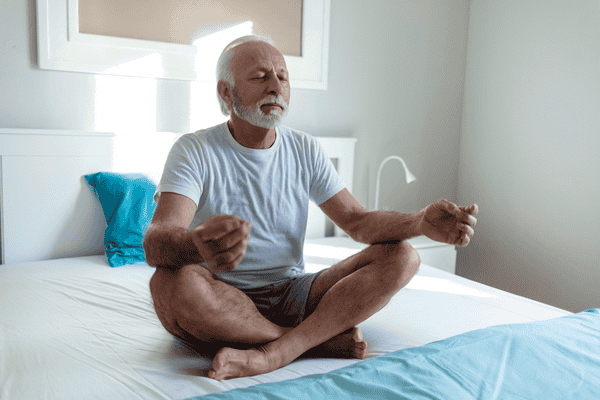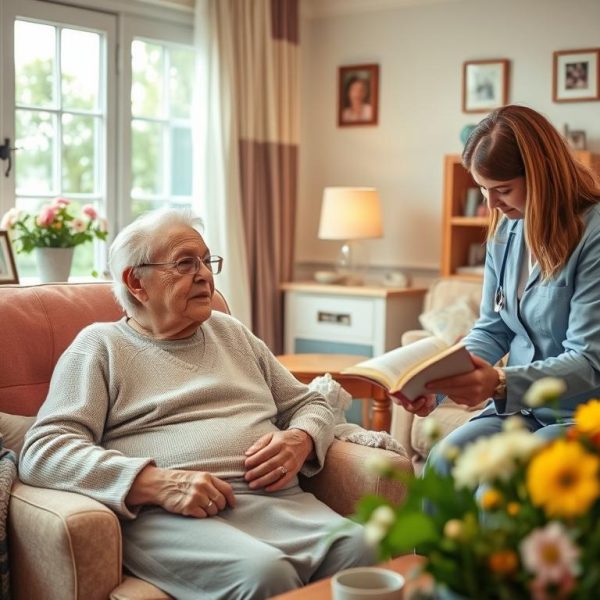Imagine a world where stress and anxiety dissolve as patients enter a space of tranquility and calm. Picture a caregiver guiding them through the soothing rituals of relaxation, transforming their experience of care from merely clinical to deeply comforting. This is the transformative power of relaxation strategies in patient care—an approach that not only addresses the physical needs of patients but also nurtures their emotional well-being.
In this exploration of relaxation techniques, we’ll delve into how these practices can revolutionize patient care, offering both caregivers and patients valuable tools for enhancing emotional wellness. Through the lens of real-life stories, we’ll uncover how relaxation strategies foster resilience, reduce stress, and build a supportive environment conducive to healing.
A Day in the Life of Sarah
Sarah, a dedicated caregiver at a busy healthcare facility, knew that her job extended beyond administering medications and coordinating treatments. She understood the profound impact that emotional wellness could have on her patients’ recovery. One patient, in particular, had caught her attention: Mr. Thompson, an elderly man grappling with chronic pain and a recent diagnosis of arthritis. His frequent hospital visits had left him feeling overwhelmed and anxious, and Sarah wanted to offer more than just physical relief.
After observing Mr. Thompson’s increased stress and noticing his struggle with traditional treatments, Sarah decided to integrate relaxation techniques into his care routine. Her goal was to create a sanctuary of calm in an otherwise hectic environment, a place where Mr. Thompson could find solace and emotional respite.
The Power of Relaxation Techniques
Sarah began her approach by introducing Mr. Thompson to progressive muscle relaxation (PMR), a technique where he would systematically tense and then release different muscle groups. This method, proven to alleviate tension and stress, helped Mr. Thompson become more aware of his body’s physical responses and offered him a new way to manage his discomfort.
In addition to PMR, Sarah integrated mindfulness meditation into Mr. Thompson’s routine. Each day, she guided him through short, focused breathing exercises, encouraging him to center his attention on the present moment. The soothing rhythm of his breath soon became a source of comfort, helping him to navigate his anxiety and regain a sense of control.
But Sarah didn’t stop there. Recognizing the importance of a holistic approach, she also encouraged Mr. Thompson to engage in activities that brought him joy, such as painting and listening to his favorite music. These hobbies, combined with his relaxation routines, began to foster a sense of emotional well-being that extended beyond the confines of his physical symptoms.
The Emotional Wellness Toolkit
Sarah’s commitment to Mr. Thompson’s emotional wellness became a model for integrating relaxation strategies into patient care. Here’s a breakdown of the key relaxation techniques that she found effective:
- Building Resilience
- Cultivating a Positive Mindset: Encouraging Mr. Thompson to focus on positive aspects of his life, despite his health challenges, helped him build resilience. Sarah provided him with journals to reflect on his achievements and moments of joy.
- Engaging in Physical Exercise: Gentle exercises, such as chair yoga, not only helped with physical discomfort but also boosted Mr. Thompson’s mood.
- Seeking Social Support: Sarah facilitated regular visits from family members and friends, ensuring that Mr. Thompson had a robust support network.
- Practicing Gratitude: Each day, Sarah and Mr. Thompson would discuss things he was grateful for, shifting his focus away from his pain.
- Setting Realistic Goals: They set achievable goals, such as improving his range of motion, which provided Mr. Thompson with a sense of accomplishment.
- Reducing Stress
- Deep Breathing Exercises: Simple breathing techniques became a cornerstone of Mr. Thompson’s relaxation routine, helping him calm his mind during moments of heightened stress.
- Progressive Muscle Relaxation: This technique was instrumental in reducing physical tension, allowing Mr. Thompson to experience relief from his chronic pain.
- Mindfulness Meditation: Sarah taught Mr. Thompson mindfulness practices that he could use independently, fostering a greater sense of inner peace.
- Visualization Techniques: Imagining peaceful, serene environments helped Mr. Thompson escape the confines of his hospital room and find mental tranquility.
- Engaging in Hobbies: Activities like painting and listening to music provided a creative outlet and emotional distraction from his health issues.
- Building a Social Support Network
- Fostering Connections: Sarah encouraged Mr. Thompson to stay connected with his loved ones, reinforcing the importance of social support in emotional wellness.
- Engaging in Social Activities: Organizing group activities within the healthcare facility helped Mr. Thompson feel a sense of community.
- Seeking Professional Assistance: When needed, Sarah facilitated access to counseling services, providing additional layers of support for Mr. Thompson.
- Scheduling Relaxation Activities
- Mindfulness and Breathing Exercises: Sarah set aside specific times each day for relaxation practices, ensuring consistency and making these activities a routine part of Mr. Thompson’s care.
- Getting Quality Sleep
- Establishing a Consistent Sleep Schedule: Sarah worked with Mr. Thompson to create a sleep-friendly environment, incorporating relaxation techniques before bedtime to improve his sleep quality.
- Creating a Peaceful Sleep Environment: This included minimizing noise and light disturbances in his room.
- Avoiding Stimulants: Sarah advised Mr. Thompson to limit caffeine and screen time before bed to promote better sleep.
The Transformation
As the weeks passed, Sarah observed a remarkable transformation in Mr. Thompson. The relaxation strategies had not only helped him manage his stress but had also improved his overall emotional state. His once frequent bouts of anxiety were now less intense, and he approached his treatments with a renewed sense of hope.
The benefits of incorporating relaxation techniques into patient care were evident not just in Mr. Thompson’s improved emotional well-being but also in his enhanced engagement with his treatment plan. Sarah’s approach had successfully created a nurturing environment that addressed both his physical and emotional needs.
Conclusion
The story of Mr. Thompson and Sarah underscores the profound impact that relaxation strategies can have on patient care. By integrating practices such as progressive muscle relaxation, mindfulness meditation, and social support into daily routines, caregivers can foster an environment where emotional wellness thrives.
As healthcare continues to evolve, the importance of addressing emotional well-being becomes increasingly clear. The integration of relaxation techniques into patient care not only enhances the quality of life for patients but also empowers caregivers with the tools to provide holistic and compassionate care.
Through the lens of real-life experiences and practical guidance, we see how relaxation strategies pave the path to emotional wellness, transforming patient care from a mere clinical process to a journey of holistic healing.








